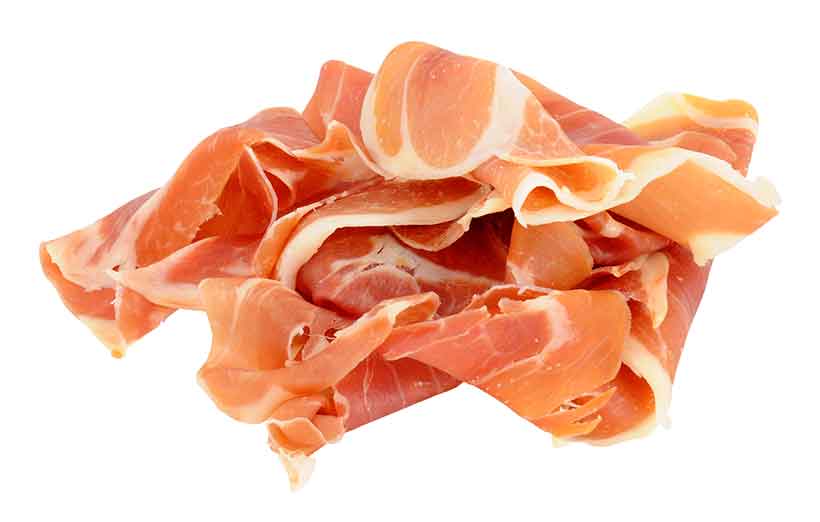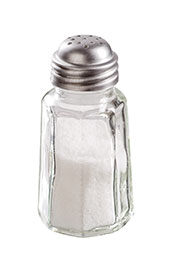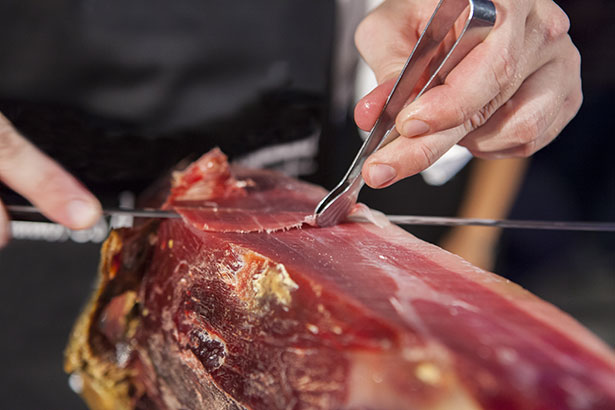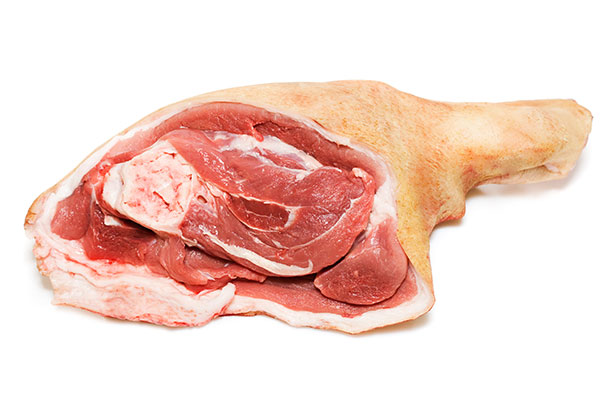What is Prosciutto and is It Good or Bad For You?
 With Italy having produced many cured hams for millennia, they are an intrinsic part of the nation’s culture.
With Italy having produced many cured hams for millennia, they are an intrinsic part of the nation’s culture.
One of the best is prosciutto; an Italian cured meat that has origins going back over 2000 years.
But just what is prosciutto?
And is it good for you or bad?
What is Prosciutto?
Unlike meats such as bacon, prosciutto is a raw, cured ham made from pork leg.
The first recorded mention of the ham came in 100 B.C in a small Italian town called Parma.
Many people pronounce the ham incorrectly, and the correct pronunciation should be ‘proh shoo toh’.
Prosciutto is a favorite deli meat, and it pairs well with fruits such as melon, or with cheese and wine. Due to the lengthy production process, prosciutto is not cheap and costs approximately $13-15 per pound at Costco.
The price somewhat depends on the variety of the ham, and there are several different types of prosciutto. Perhaps the most famous of these is prosciutto di Parma which has a protected designation of origin (PDO).
How is Prosciutto Made?
The official website of Prosciutto di Parma lists the six stages involved in making prosciutto;
First Stage – Salting
First of all, the ‘maestro salatore’ (master salter) salts the pork leg in sea salt.
At this stage, it is important to ensure the meat is fully coated with salt.
Second Stage – Salt Absorption
Following the salting process, the makers store the hams in a refrigerated, temperature-controlled room for 70 days.
This 70-day timeframe is to give the ham chance to absorb the salt properly.
Third Stage – Washing
Once the 70 days are up, the ham goes through a washing stage, cleansing the meat with warm water and any excess salt is removed.
Fourth Stage – Drying
After washing, the makers store the hams in large rooms with good ventilation and big windows for sunlight.
These conditions are particularly important for gradually drying and developing the flavor of the prosciutto.
The drying stage lasts for approximately three months.
Fifth Stage – Layering the Prosciutto With Lard
If you use lard for cooking, you will know the incredible flavor it helps impart to food.
In this stage, the makers use lard not only for flavor but also to stop the outside of the ham from drying too quickly.
Typically, someone hand rubs a combination of lard, salt, and pepper into the surface of the ham.
Sixth Stage – Quality Inspection
Shortly after the one year mark, an independent expert inspects the prosciutto with something called a horse bone needle.
With this needle, the inspector makes small holes in various areas of the prosciutto to smell the meat.
For this reason, the producers can identify any spoilage signs or indications that the meat is anything other than perfect.
Note: In some cases, this inspection stage may happen long after one year of storage. For instance, producers of premium prosciutto often age the ham for up to 48 months.
So long as the prosciutto passes the quality inspection, it is then ready for packaging and distribution.
Prosciutto Has a Long History

Throughout the world, prosciutto di Parma is the most famous. However, every region in Italy would develop its own version of prosciutto with slightly different standards.
In fact, there are ten different prosciutto varieties which all have EU protected designation of origin certification.
Here are the different types;
- Crudo di Cuneo
- Prosciutto di Carpegna
- Prosciutto di Modena
- Prosciutto di Norcia
- Prosciutto di Parma
- Prosciutto di San Daniele
- Prosciutto di Sauris
- Prosciutto Toscano
- Prosciutto Veneto
- Speck dell’Alto Adige
Despite having a very similar production process, they all have slightly different tastes and textures. This difference is due in large part to the different foods the pigs feed on.
Is Prosciutto Good or Bad For You?
Italy’s prosciutto industry reacted with indignation when the World Health Organization classified the cured ham as a ‘likely carcinogen’ in late 2015.
But is there anything to fear about including prosciutto in our diet?
Nutrition Facts
Here is the nutritional composition of prosciutto di Parma on a per-100g basis (1);
- Calories: 269 kcal
- Carbohydrate: 0.3 g
- Fat: 18.3 g
- Protein: 25.9 g
Vitamins
- Vitamin B1 (Thiamine) – 82% RDA
- Vitamin B2 (Riboflavin) – 16% RDA
- Vitamin B3 (Niacin) – 37% RDA
- Vitamin B6 (Pyridoxine) – 81% RDA
- Vitamin B12 (Cobalamin) – 27% RDA
- Vitamin B9 (Folate) – 6% RDA
- Vitamin E (Tocopherol) – 2% RDA
Minerals
- Calcium – 1% RDA
- Copper – 3% RDA
- Iron – 6% RDA
- Magnesium – 5% RDA
- Manganese – 1% RDA
- Potassium – 27% RDA
- Phosphorus – 26% RDA
- Selenium – 20% RDA
- Zinc – 23% RDA
Nitrates and Nitrites
Manufacturers often add nitrates and nitrites to prosciutto.
The World Health Organization state that these compounds are carcinogenic to humans (2).
However, the science is unclear on just how much of a danger they present. There is also a huge difference between a good quality bacon and something like Spam or hot dogs.
Despite all that, many people mistakenly believe that prosciutto, as a processed meat, is full of these preservatives.
Traditionally made prosciutto has no added preservatives and the only ingredients are pork and salt.
That said, some cheaper prosciutto products do use nitrates as preservatives. If you want to avoid them, just look for prosciutto which has a PDO certification.
Also, this is not only an issue for prosciutto, and other cured meats, such as chorizo also feature these compounds.
Salt Content

However, the truth is that low sodium is likely just as bad as consuming too much.
Skeptical?
Here is a look at a small selection of the studies;
- Guidelines for lower sodium intake “may not produce benefit, and may cause harm,” and “sugar is much more meaningful to blood pressure than sodium” (3).
- Some recent studies report an association between low sodium intake and cardiovascular disease (4).
- A study of 152 healthy individuals split the participants into two groups; one on a high salt diet, the other on low salt. The results show that the low sodium diet had an association with increased insulin resistance. Further, the researchers state that the results of the study suggest we need further research into diabetes, cardiovascular disease and low-salt intake (5).
Prosciutto is High in Fat
Unfortunately, some people still have an inherent belief that animal fats are fattening and “artery-clogging.”
Recent science shows that this notion is simply not true. In particular, the primary fatty acid in prosciutto (and pork in general) is oleic acid.
Notably, oleic acid is also the main fatty acid in olive oil…. which people view as ‘heart healthy’.
Making Prosciutto at Home

On the other hand, you do need to give it about 365 days to cure so it is a definite time commitment.
It involves purchasing a whole pork leg, heavily salting it, and finding somewhere to store it for a year.
There is an excellent step-by-step guide on how to make it here.
If this all sounds far too complex, then it is much easier to make another Italian cured meat called pancetta at home.
Prosciutto Recipes
So, you have some prosciutto and a distinct lack of ideas over what to do with it?
For some inspiration, here are a few delicious recipes;
- Mature Cheddar-Wrapped Prosciutto: Cut some pieces of mature cheddar into stick shapes, and wrap them with a slice of prosciutto.
- Antipasto: Make a selection of finger food including prosciutto, cheese, olives, bell peppers, and salami.
- Prosciutto-Avocado Wraps: Cut an avocado into slices and wrap each piece with a slice of prosciutto.
- Prosciutto and Asparagus: Cook some asparagus spears in a bit of butter and then wrap with prosciutto.
- Salmon, Prosciutto and Cream Cheese: Cover the outside of the salmon with cream cheese, and then wrap with prosciutto. This recipe also works great with salmon sashimi.
- Prosciutto Salad: Several slices of the cured ham, with leafy greens, olives, bell peppers, cherry tomatoes, lemon juice, white wine vinegar, salt, and olive oil.
- Just Prosciutto: Prosciutto tastes delicious just eating it by the slice, and it also makes an excellent pairing with wine.
Final Thoughts
Despite many scare-mongering over the health properties of cured hams, prosciutto is a traditional, healthy food.
In fact, if you visit most places in the Mediterranean, you will see it forms a staple part of the diet there.
Prosciutto is a tasty food to enjoy — especially with some wine.
Related Articles


8 thoughts on “What is Prosciutto and is It Good or Bad For You?”
365 days is quite the time commitment for sure! Hopefully, the WHO will realize their error by then too…
You would hope so, but I wouldn’t hold your breath!
I have just winter around the corner in Australia and pork season it is coming, You do not need to preserve a whole leg, go for simple cuts to get the skill a lot less time.
a) Good quality pork, a whole belly, the whole loin (well any good muscle with some fat)
b) Good salt
c) the spice you desire.
d) Ziplock bags
e) Place dry ingredients pork in the bag, mix once, or more times every day for few days
F) they hung
e) when ready, get a vacuum sealer and to the spare fridge for the next 12 months or more.
If well prepared will keep well for some time, I am having consuming these week some pork neck done in 2014, I am 70 still alive, and if it is bad for me well I am still with no medication (at least since 1981) and still a blood donor.
Plenty of free material in the net to make your own good quality preserve meat, only choose the best quality ingredients
Enjoy
Thanks for the great tips, Camilo.
3-year-old homemade cured ham sounds great.
Hope that it was worth the long wait!
What is the actual amount of salt content in the finished product?
It will depend on the particular product/recipe. Somewhere around 4 – 5 grams per 100g sounds about right.
Can I use only a sea salt to cure my deli meats, without any shit nitrates, nitrites, cuz I want to make some good product, but still safe! Also why people do put those nitrates crap, thank you!
The main reason is that nitrates are cheap and pretty effective for preserving food/preventing bacteria. There is an article/guide to curing at home here: https://www.leaf.tv/articles/how-to-cure-meat-without-sodium-nitrite/
Comments are closed.